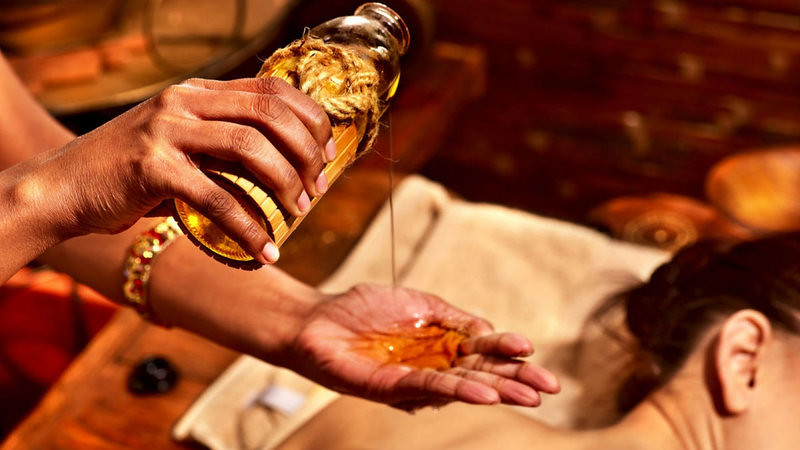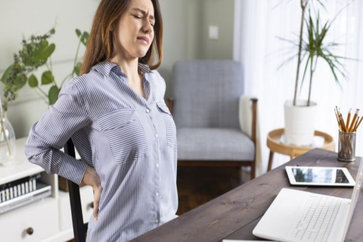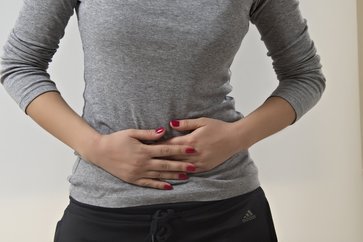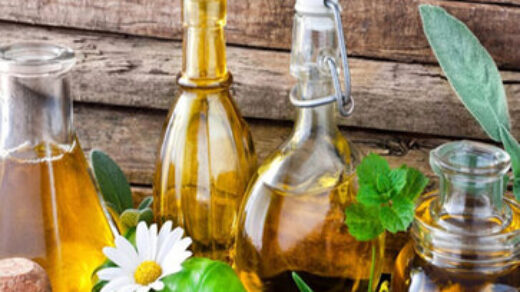Abhyanga Massage – The Benefits of Ayurvedic Oil Therapy
Touches carry a much deeper meaning than many of us think. Take, for example, babies, those who are constantly petted and stroked have stronger immunity and health is stronger than those who are deprived of parental caress.

Tactile sensations with the mother’s body for the child are no less important than food. Cuddled children physically and mentally develop better.
The same applies to adults; a gentle or calm touch can be the most effective medicine against stress enhances immunity and improves the functioning of the nervous system. In India, regular home massage is practiced and many have family traditions.
- For babies, massage is done every day from birth to the age of three.
- For mothers, a special message is given for 40 days after delivery.
- For adolescence, many massage procedures are performed for wellness.
Adults are advised to do an Ayurvedic abhyanga massage with herbal oils, in accordance with the constitution of their body or the therapeutic goal to be achieved.
Abhyanga is a complete self-massage that is important for body health. Abhyanga oil massage provides lubrication to all joints and major marmas that directly affect the overall health of a person.
Marma is the point of intersection of the energy channels (Nadi) it is capable of influencing all systems of the body. This massage brings the body and soul into harmony, speeds up the metabolism and the flow of energy.
However, the whole process (the choice of oil, the power of pressure) must comply with the constitution of the body of a particular person. For example, warming and soothing sesame oil are good for cold Vata-Dosha, but for fire Pitta, it can be too “hot” and even cause a rash.
Abhyanga Massage Procedure
Full self-massage includes nine stages that fall on different parts of the body, below are the procedure of how to do abhyanga massage at home:
1. The hair part of the head:
While performing massaging in these parts following objectives is involved:
- Brahmarandhra spot (located in the center of the skull, about 8 fingers from the eyebrows)
- Adhipati marma(in the upper part of the skull between the ears)
- Mania mule (hollow behind the skull).
2. The feet part
While performing massage in this parts care is taken that massaged is turned, first, the right foot and foot, then repeat with the left:
- Talahridaya marma(center of the foot)
- Fingers (each massaged separately: first, the joints are massaged, starting with the big one and towards the little finger, then the fingers themselves in the same order)
- Kshipra Marma (located between the second and the big fingers (2-3 cm in the hollow), massaged by the thumbs)
- Lastly the foot itself (massaged from the fingers up to the foot)
3. Legs part
While performing massage following parts is taken into accounts:
- The ankle joint (by the hour, arrow)
- Lower leg (up and down from the ankle to the knee)
- Knee (do massage of the joint with palms, in the direction of the clock hand, then gently massage the area under the knees)
- Thigh (massaged by analogy with the leg)
- Lohitaksha marma point (located above the lymph node near the groin, gently knead the middle finger).
4. The hands
It should be massaged in the same ways as the feet, first, the right hand and up to the shoulder, then the left:
- Talahridaya point (in the middle of the palm)
- Fingers (everything, as with the feet, from big to the little finger)
- Hand (from fingers to wrist)
- Wrist (massaged clockwise, slightly compressed with the fingers of the other hand over the joint)
- Forearm (up and down)
- Elbow (massaged as the wrist)
- Shoulder
- Shoulder joint (palms, like knees)
- Kakshadhara marma (axillary center)
5. Back
While performing the back portion of the body, first start massaging from the lower part, then in the upper part.
6. The abdomen Part
For massaging this part apply accordingly:
- Nabhi marma point is massaged (located in the navel area)
- The oil is poured clockwise from the navel (small circle) to a wider radius that covers the entire abdomen.
- Then the direction changes and the circle gradually narrow.
7. Chest Part
- Nabhi corresponds to the third chakra (about 12 cm above the navel)
- Hridayam (located in the area of the fourth chakra, slightly to the left of the center of the chest, massaged by a circular motion clockwise.
- Upper chest
- Nila marma (hollow over the sternum, the throat chakra Sarasvati, massaged by the middle finger).
8. Neck and face
For massaging neck and face using less fatty oil, apply accordingly:
- Neck (palms from the bottom to the top)
- Hanu marma (hollow under the lower lip, massaged with the index finger (rests on the marma point) and middle (rests on the chin) with the first finger by moving
- Right ear, then the other hand and to the left
- Folds on the cheeks and the corners of the mouth (massaged from the bottom up)
- Eyes (in a circular motion from the beginning of the eyebrows to the end of the eye, and from there under the eye back to the nose)
- The Sthapani chakra (in the middle of the forehead above the eyebrows, massaged into the upward direction with the middle finger along the lines leading to it from the nose)
9. Forehead
Tightening the skin of the face – can be performed either after abhyanga or separately. Such self-massage of the face helps with migraines, runny nose, lethargy. At each point follows
- Stop for about half a minute
- Center of the chin
- Corners of the mouth
- Dimple above the upper lip
- Outer corners of the nostrils
- Cheekbones
- Points under the lower eyelids (not massaged, but gently pressed by the ring fingers)
- Eyebrows (knead them with your thumb while pressing on the inside of their base)
- Sthapani Chakra
There is also an abbreviated method of massage, which incorporates only the 1 and 2, 6, and 9 stages. It affects the most basic points, is designed for 3 minutes, and is suitable for those who do not have enough time. The full procedure takes about 15 minutes.
These massage therapies are helpful to tone a body and activate the function of the main chakras. During the procedure, listen to your feelings, and adjust the duration of movements as needed.
Abhyanga Techniques and Principles
- For self-massage abhyanga at home, you should follow some practical recommendations.
Time and frequency of massage
- Full self-massage is best if done before a shower in the morning or in the evening before bedtime.
- For fatty skin types, Kapha representatives, or for Kapha-type disorders, it is better to massage in the morning, it will be well stimulated.
- For disorders of Vata (nervousness, insomnia) or dry skin, massages done twice a day in the morning and evening are useful.
- The person with sensitive skin, the need for a massage is minimal and the best time for it is the Pitta time (afternoon).
Oil for the procedure
- It must be warm (you can hold it under a stream of hot water before use)
- It must fit your constitution (for Vata – choose warmer oils, for Pitta – cool)
- With very high-fat content, it is better to limit the oil, or even replace it with pea flour or loofah
- For an evening massage of the feet and palms, you can use a little oil ghee.
Precaution
Self-massage cannot be performed during times of serious weakness, constipation, exhaustion, menstruation, or fever. In these cases, the toxins can penetrate even deeper into the tissues.
Self-massage of the abdomen is contraindicated for pregnant women, patients with a stomach ulcer, or for heart diseases.


























